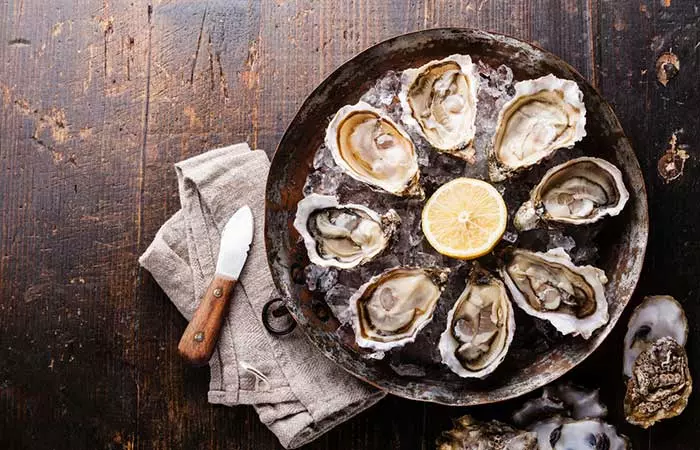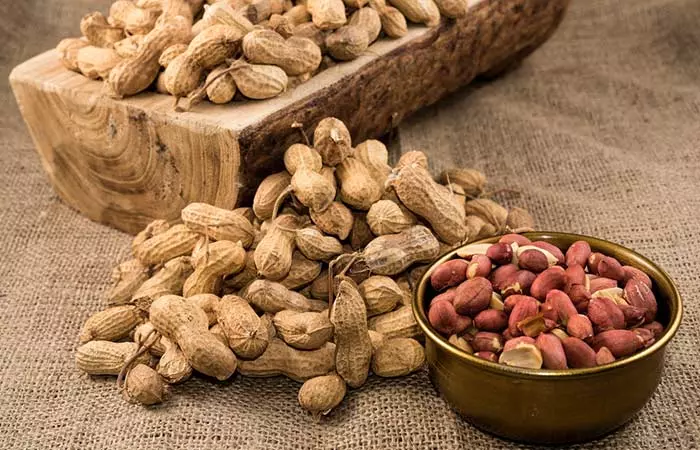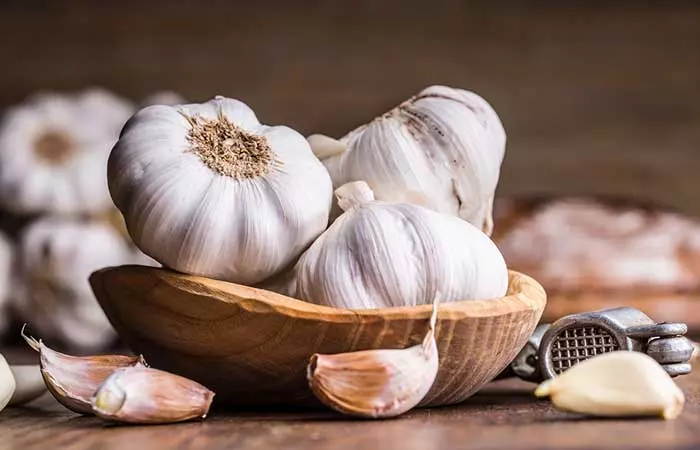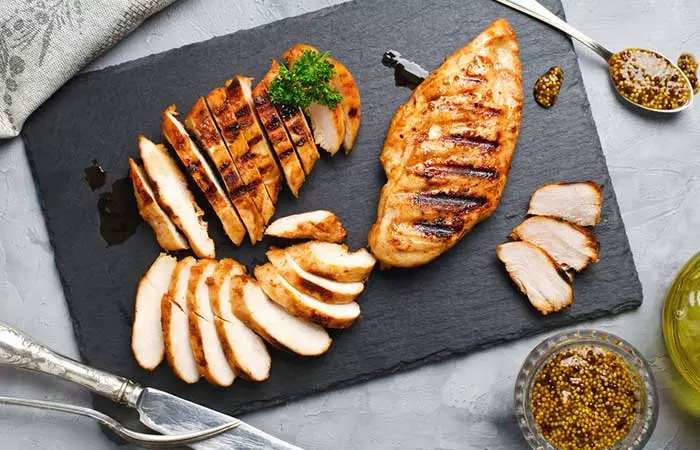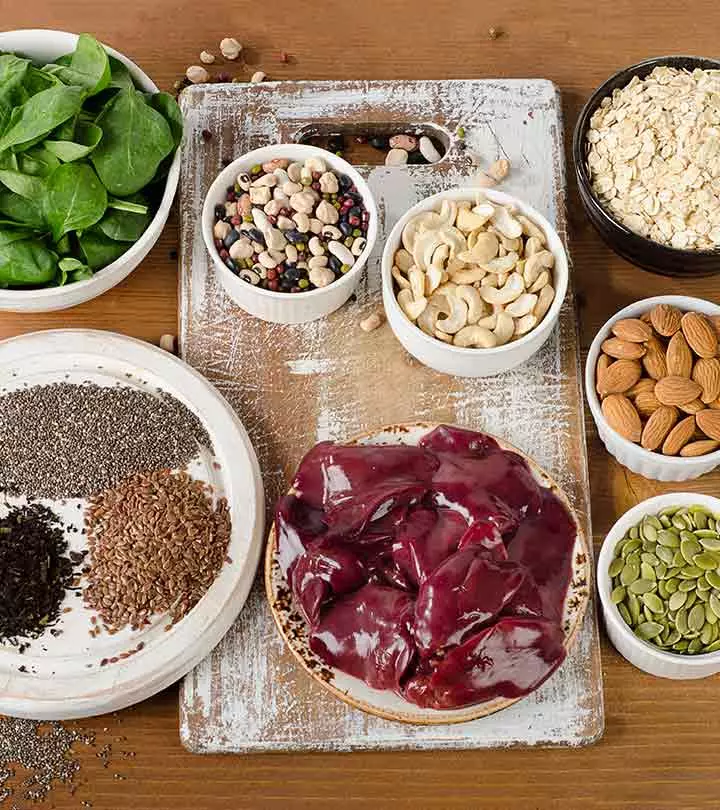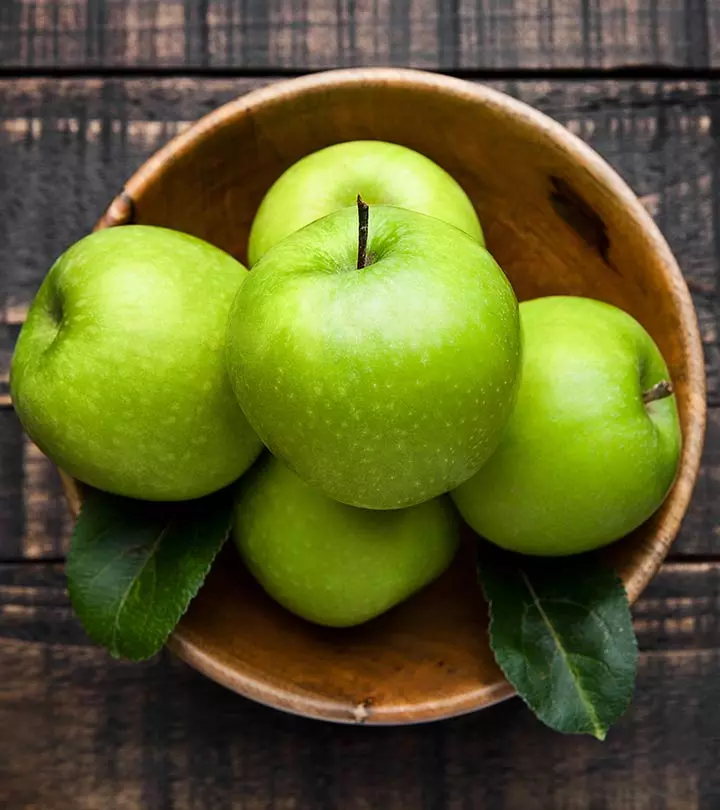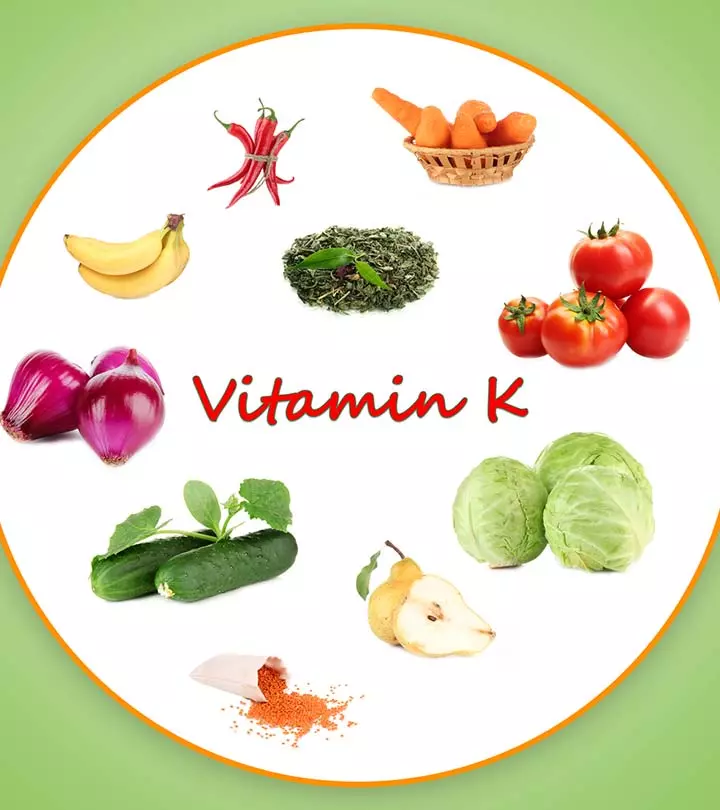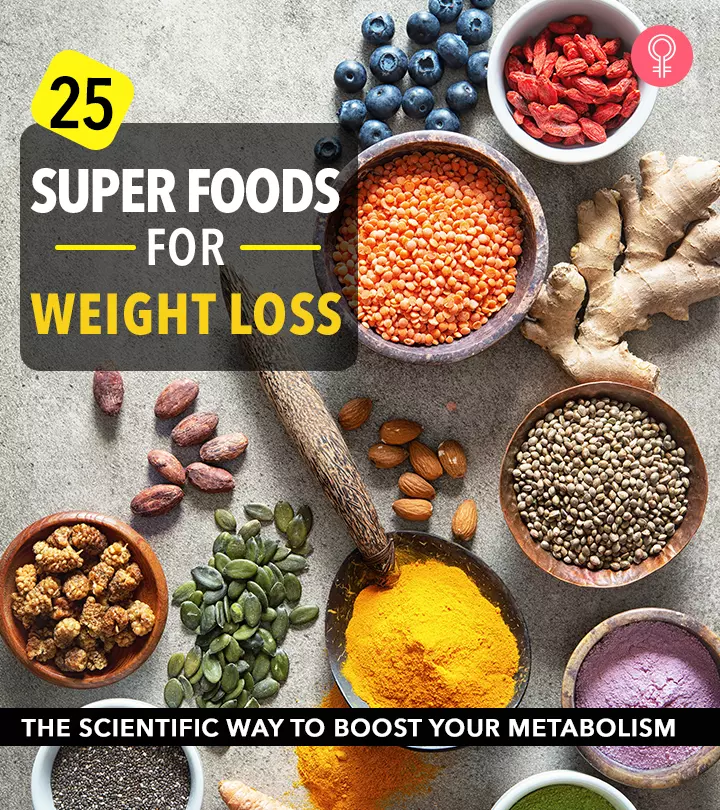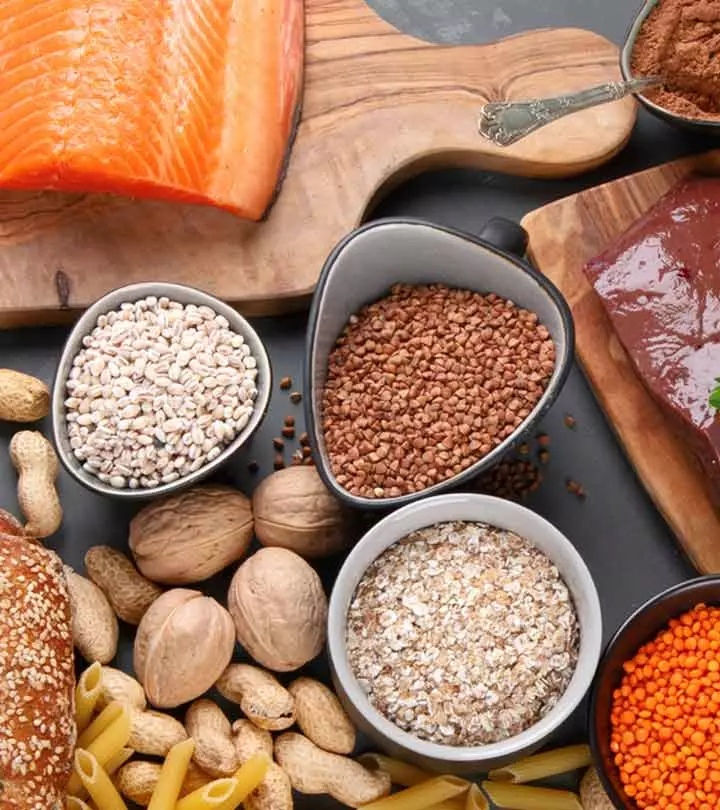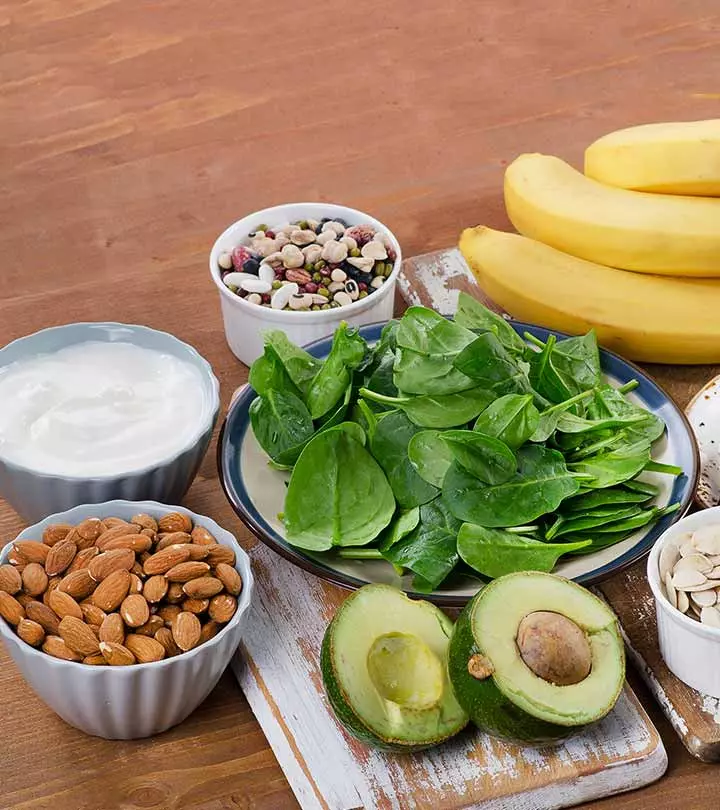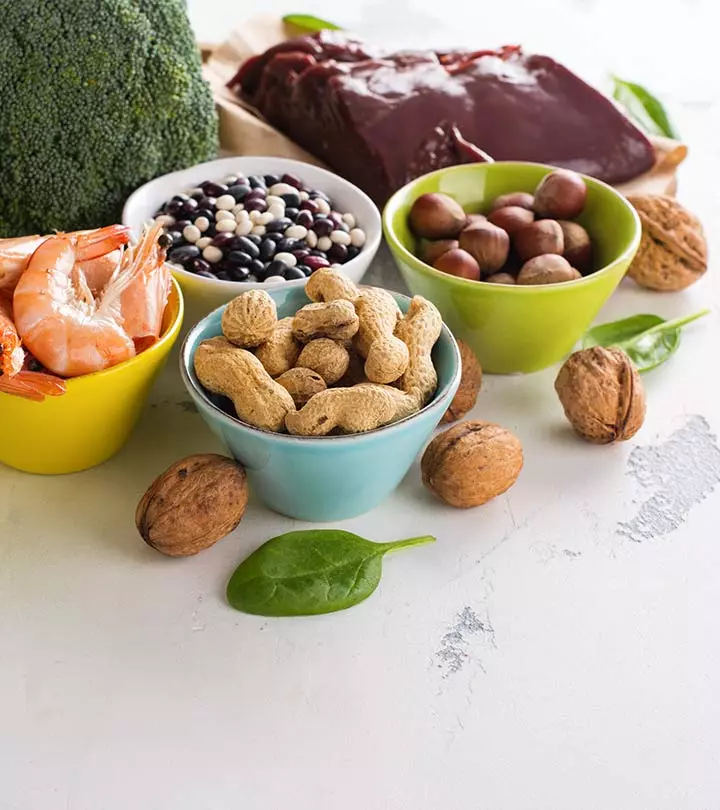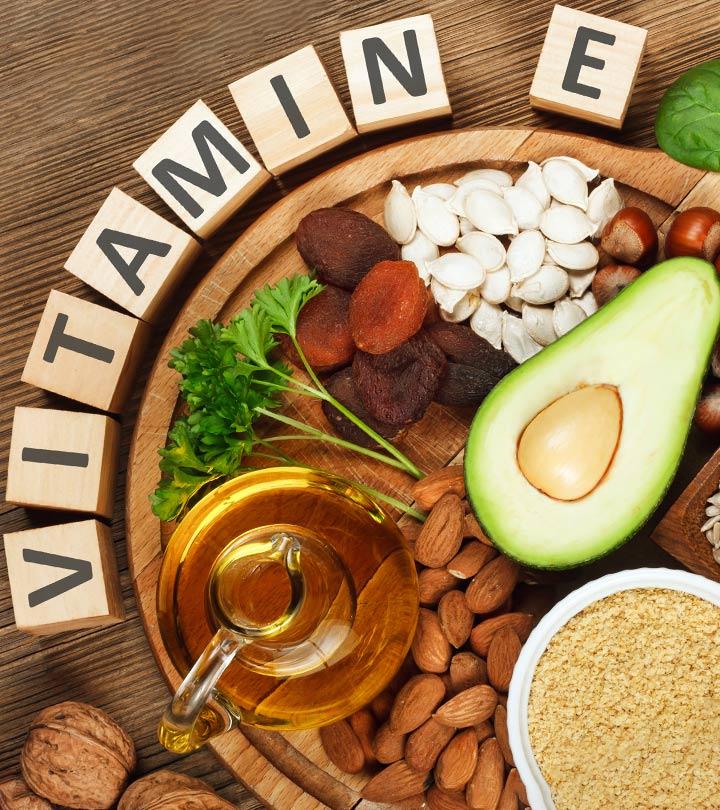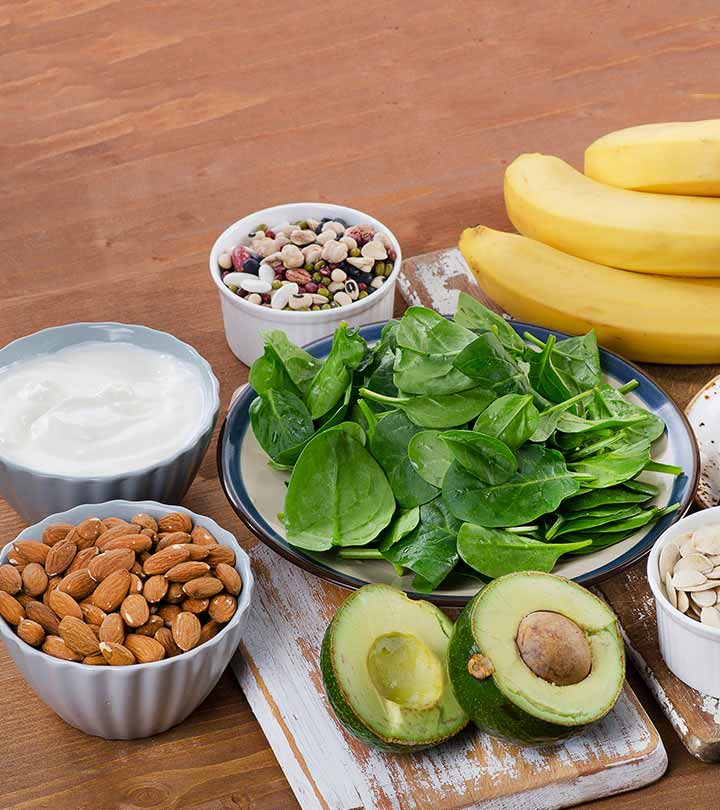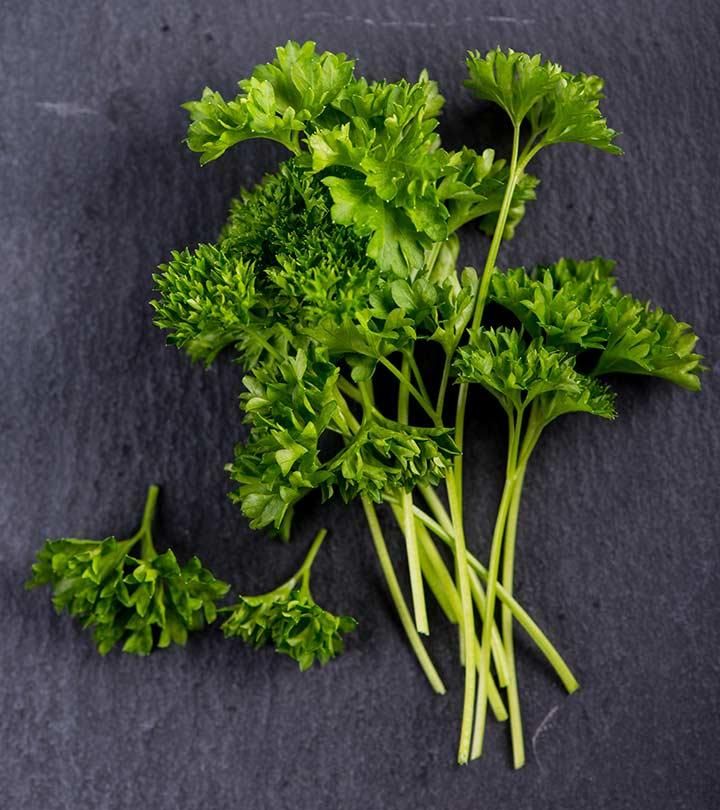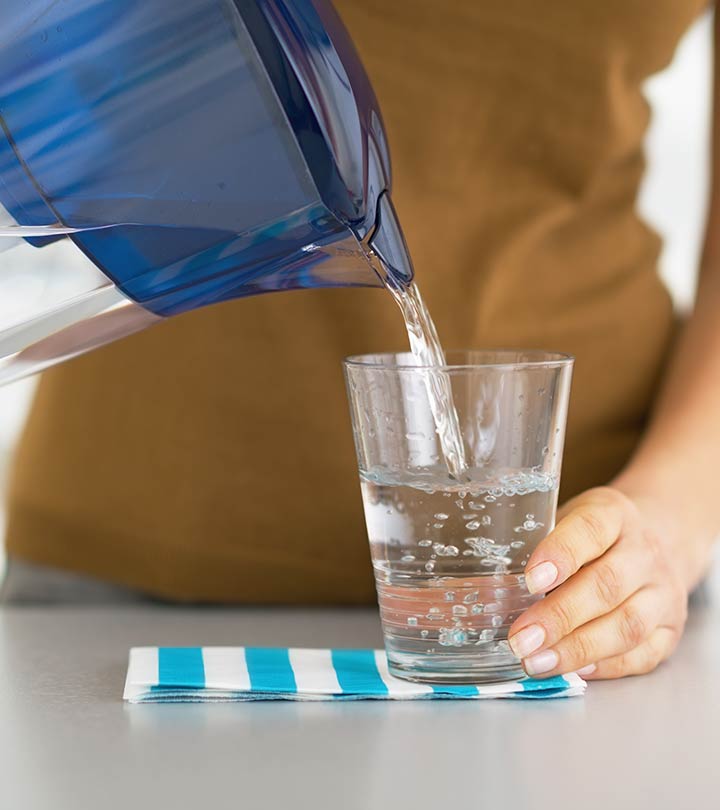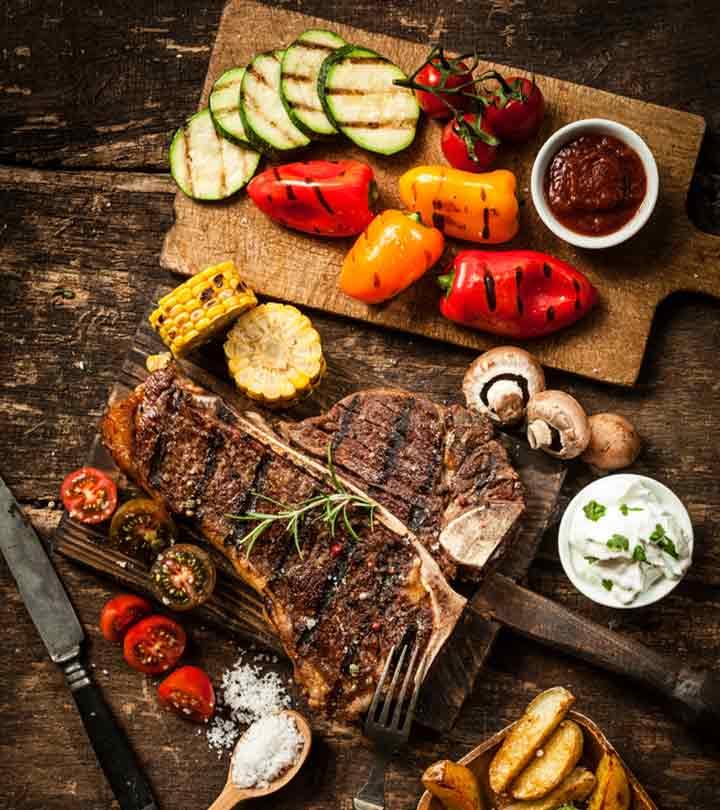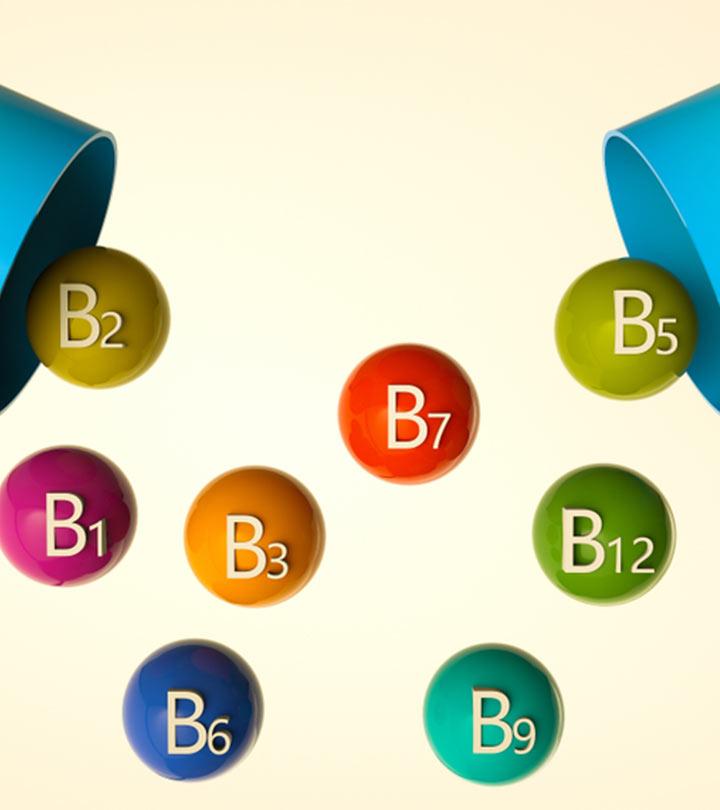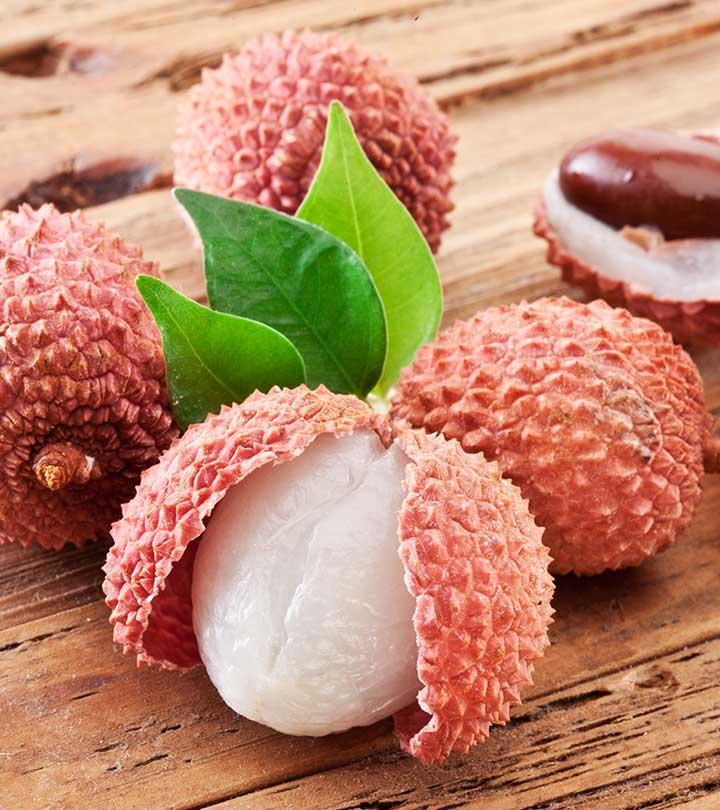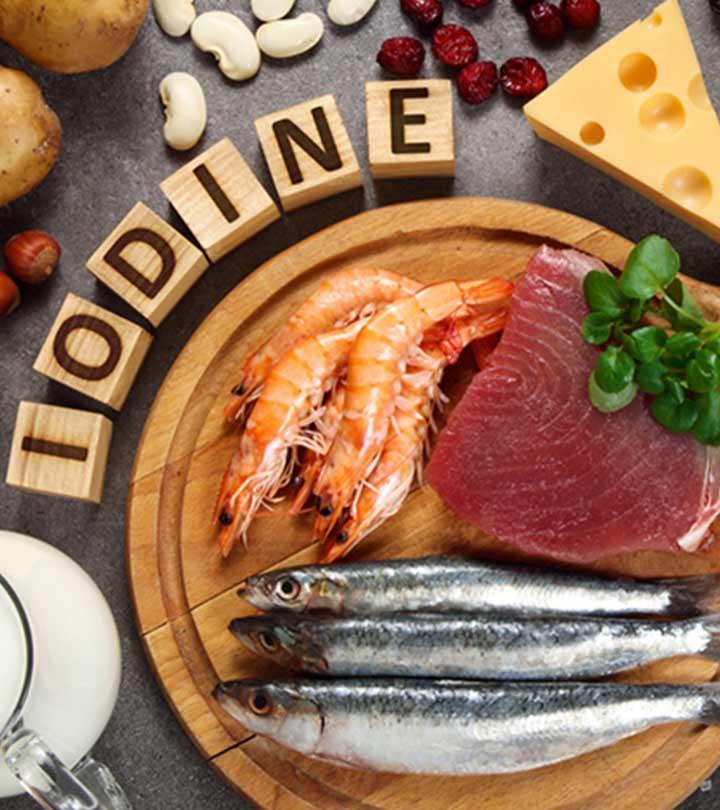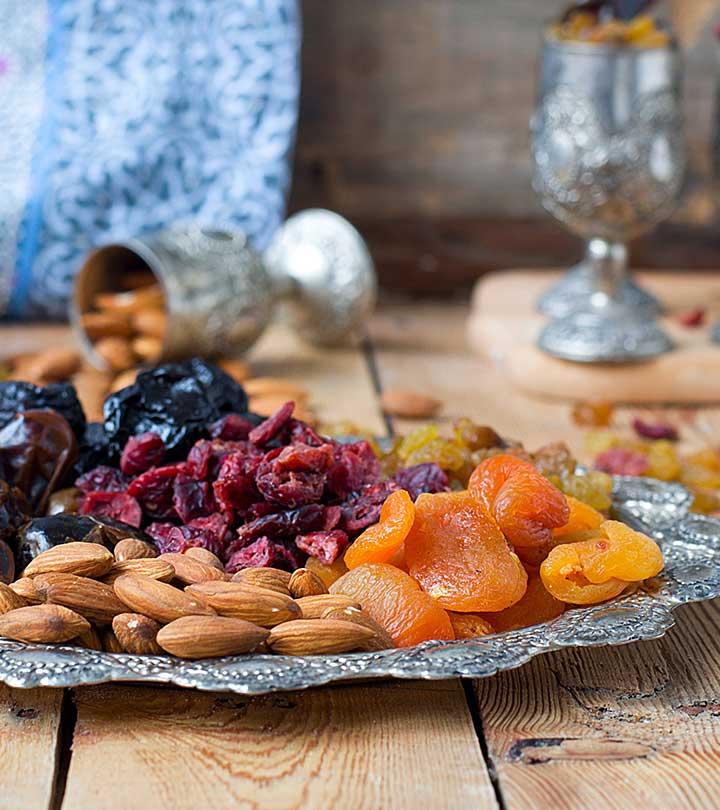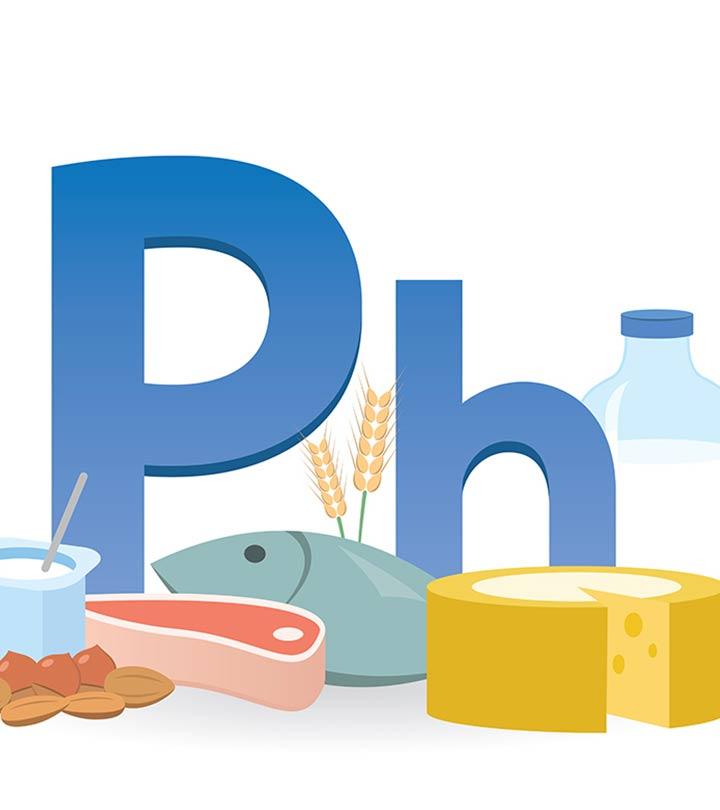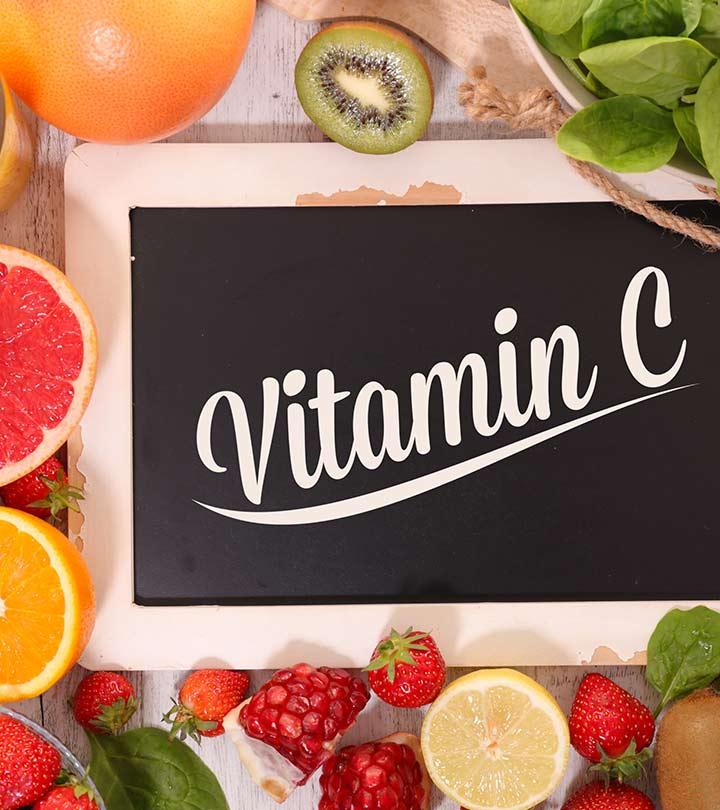26 Best Zinc-Rich Foods To Include In Your Diet + Benefits
Proper intake of this trace mineral from various food sources can do wonders for your body!
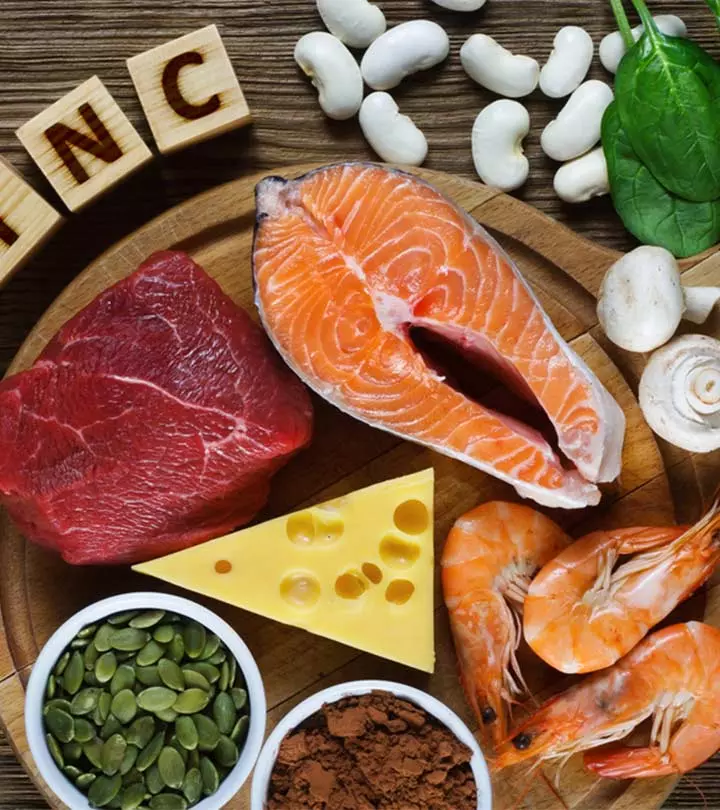
Image: Shutterstock
Maintaining a healthy lifestyle requires the consumption of zinc-rich foods. Zinc is an important mineral and is vital for immune function. It plays a significant role in the production of enzymes in our bodies. As an antioxidant, it reduces cancer risk by neutralizing free radicals. This mineral is necessary for wound healing as it promotes collagen synthesis. Zinc deficiency can cause issues like hair loss, poor immunity, and attention disorders, to name a few.
This article discusses the benefits of zinc-rich foods, the recommended intake, and how to increase your zinc intake. Keep reading.
In This Article
Why Is Zinc Important?
The right time to ask the right question. Because what’s the point in knowing about the foods rich in zinc without first knowing the nutrient’s importance?
Zinc is a trace mineral. But it is found in cells throughout the body. The body’s immune system requires zinc to function optimally. And guess what – it also helps you use the senses of smell and taste.
Zinc helps in the production of about 100 types of enzymes in our body. It acts as an antioxidant and neutralizes the effects of free radicals, reducing risk of cancer. It also stimulates the production of blood in the body. Zinc promotes the synthesis of collagen, which is a necessary element in wound healing.
More importantly, zinc is a must during pregnancy, infancy, and childhood. The body needs zinc to grow and develop properly.
Simply put, it could be a trace mineral and your doctor would have forgotten to stress on its importance – but you would only be inviting illness without adequate levels of zinc.
 Did You Know?
Did You Know?What Is The Recommended Daily Allowance Of Zinc?
This table (as per the Institute of Medicine, Nepal) will help you get an idea.
| Age | RDA of Zinc |
| Birth to 6 months | 2 mg |
| 7 months to 3 years | 3 mg |
| 4 to 8 years | 5 mg |
| 9 to 13 years | 8 mg |
| 14 to 18 years (girls) | 9 mg |
| 14 and above (boys and men) | 11 mg |
| 19 and above (women) | 8 mg |
| 19 and above (pregnant women) | 11 mg |
| 19 and above (lactating women) | 12 mg |
That’s with the dosage. But how do you ensure you are getting enough of it? Well, these foods rich in zinc can help.
What Are The Foods High in Zinc?
What foods have zinc? Animal-based ones. This micronutrient is abundant in seafoods like oysters, red meat, and poultry. You can also find this trace element in lobsters, crab, and dairy products. Vegetarians and vegans can get their fill by including whole grains, beans, nuts, and breakfast cereals in their diet.
Here are some of the richest sources of zinc:
- Oysters
- Sesame Seeds
- Flax Seeds
- Pumpkin Seeds
- Oats
- Cocoa Powder
- Swiss Cheese
- Egg Yolk
- Lima Beans
- Kidney Beans
1. Oysters
- Serving size – 50 grams
- Zinc – 8.3 milligrams
- DV% – 55
Apart from zinc, oysters are also rich in protein. And the best part is they boost your protein intake without increasing your fat consumption. They are also rich in vitamin C – one serving covers about 15 percent of your daily requirement of the vitamin (1). Vitamin C is great for immunity while protein enhances muscle and cell health.
How To Include In Your Diet
You can have them broiled with herbs. Even raw oysters work wonderfully well, especially when combined with horseradish. But be careful where you get them as they also are a common cause of food poisoning.
2. Sesame Seeds
- Serving size – 100 grams
- Zinc – 7.8 milligrams
- DV% – 52
Sesame seeds are also a great source of phytosterols, compounds that help lower cholesterol. Another compound in sesame seeds, called sesamin, helps balance hormones and boosts overall health. The seeds are also high in protein (2).
How To Include In Your Diet
You can use sesame seed butter in the place of peanut butter on your toast. The seeds also pair very well with salmon or chicken – you can make a delicious homemade granola.
3. Flax Seeds
- Serving size – 168 grams
- Zinc – 7.3 milligrams
- DV% – 49
Flax seeds are also extremely rich in omega-3 fatty acids – nutrients that boost heart and brain health – in addition to offering numerous other benefits. The seeds also aid in the treatment of arthritis and inflammatory bowel disease (3).
How To Include In Your Diet
You can add ground flax seeds to your breakfast smoothies or salads. You can also sprinkle the seeds on cooked vegetables.
 Quick Tip
Quick Tip4. Pumpkin Seeds
- Serving size – 64 grams
- Zinc – 6.6 milligrams
- DV% – 44
Pumpkin seeds are also rich in phytoestrogens that improve cholesterol levels in postmenopausal women (4). The seeds are also rich in antioxidants that give your health a boost.
How To Include In Your Diet
You can add the seeds to your bedtime salad – this nighttime snack can also boost sleep quality.
5. Oats
- Serving size – 156 grams
- Zinc – 6.2 milligrams
- DV% – 41
One of the most popular breakfast choices, if you ask us. The most important nutrient oats contain is beta-glucan, a powerful soluble fiber. This fiber regulates cholesterol levels and enhances the growth of good bacteria in the gut.
Whole grains like oats can also help control blood sugar levels, and that’s essential, given the rise in diabetes cases across the globe (5).
How To Include In Your Diet
You can simply have oats for your breakfast as the easiest way to increase your zinc intake. You can also consume oatmeal as a fortified cereal.
6. Cocoa Powder
- Serving size – 86 grams
- Zinc – 5.9 milligrams
- DV% – 39
The zinc in cocoa powder enhances immunity, and given it’s something we all love (that finger-licking dark chocolate) – getting adequate amounts of zinc shouldn’t be a problem. Cocoa powder is also rich in flavonoids that boost immunity.
How To Include In Your Diet
Add cocoa powder to your coffee or tea. You can also use unsweetened cocoa powder in gravy, protein shakes, and hot cereal.
7. Swiss Cheese
- Serving size – 132 grams
- Zinc – 5.8 milligrams
- DV% – 38
It is important to note that cheese is one healthy source of calcium – the mineral you need for strong bones. And since it is an animal source, Swiss cheese is considered a complete protein – it contains all the amino acids your body requires to make protein.
However, practice moderation with dairy products like Swiss cheese as it also contains saturated fats that may not be healthy if taken in large amounts.
How To Include In Your Diet
You can add a slice of Swiss cheese to your sandwich or bowl of soup. Add shredded cheese to your vegetable salad. Or have it with scrambled eggs.
8. Egg Yolk
- Serving size – 243 grams
- Zinc – 5.6 milligrams
- DV% – 37
Egg yolk is replete with other nutrients as well. It contains vitamins A, D, E, and K. The yolk is also rich in omega-3 fatty acids. And more importantly, the yolk contains the antioxidants lutein and zeaxanthin – compounds that boost vision health (6).
How To Include In Your Diet
Boiled egg yolk is a good option – you can add it to your salad.
9. Lima Beans
- Serving size – 178 grams
- Zinc – 5 milligrams
- DV% – 34
Apart from zinc, lima beans are also rich in folate – a nutrient required for DNA synthesisi The process through which the four deoxynucleic acids adenine, thymine, cytosine, and guanine are joined to produce DNA. and cell division. The beans are also rich in vitamins B1 and B6. And the fiber in the beans protects the colon and fights digestive cancers (7). It also can promote satiety and eventually encourage healthy weight loss.
How To Include In Your Diet
You can add dried lima beans to your evening bowl of soup. A combination of bacon and eggs with lima beans just sounds so wonderful, or you could also pair lima beans with some pork chops as a complete dinner.
10. Kidney Beans
- Serving size – 184 grams
- Zinc – 5.1 milligrams
- DV% – 34
Apart from helping you get adequate amounts of zinc, kidney beans also reduce the concentrations of C-reactive protein, which is known to cause inflammatory disorders (8). The beans also control blood sugar levels and invariably help in the treatment of diabetes.
How To Include In Your Diet
They can be a simple addition to your regular fruit or vegetable salad. Or you can have canned beans as a healthy evening snack. Even adding them to hearty soups or stews can work well.
11. Peanuts
- Serving size – 146 grams
- Zinc – 4.8 milligrams
- DV% – 32
Peanuts are also a host to a number of heart-healthy nutrients. These include niacin, magnesium, copper, oleic acid, and various other antioxidants (include the all-popular resveratrol).
Peanut consumption has also been linked to a reduced risk of gallstone development in both men and women. This could be attributed to the cholesterol-lowering effects of peanuts as gallstones are mostly made of cholesterol.
How To Include In Your Diet
Eating them right out of the shell could be the best way. Cracking and snacking, as we can also call it. Grab a handful of peanuts as you sit to watch the evening sitcom – and yes, crack and snack.
Or wait, you can also add peanuts to granola bar recipes.
12. Lamb
- Serving size – 113 grams
- Zinc – 3.9 milligrams
- DV% – 26
Lamb is primarily comprised of protein, and well, it is high-quality protein that contains all of the essential amino acids. Lamb protein can be especially beneficial to bodybuilders, recovering athletes, or even patients who are recovering from a surgery.
One important amino acid in lamb, called beta-alanine, improves physical performance (9).
How To Include In Your Diet
Lamb chops or roasts or steaks can be a good addition to your dinner.
13. Almonds
- Serving size – 95 grams
- Zinc – 2.9 milligrams
- DV% – 20
Almonds are the most popular of the nuts, and probably the tastiest too. They are loaded with antioxidants that relieve stress and even slow down aging. The nuts also contain high levels of vitamin E, a nutrient that protects the cell membranes from damage. The vitamin also decreases risk of brain diseases like Alzheimer’s (10).
How To Include In Your Diet
Have a handful of almonds in the morning with breakfast and at night before hitting the bed. You can also add chopped almonds to your favorite smoothie.
14. Crab
- Serving size – 85 grams
- Zinc – 3.1 milligrams
- DV% – 20
Considering seafood, crab is also a complete source of protein. And it also is an impressive source of vitamin B12 – which aids in the production of healthy blood cells. The vitamin also decreases risk of heart disease.
How To Include In Your Diet
Simply sprinkle chopped crab onto a vegetable salad. You can also add it to your soup recipe. Even better, you can sauté crab meat with pea pods, mushrooms, and water chestnuts for a nutritious stir-fry.
15. Chickpeas
- Serving size – 164 grams
- Zinc – 2.5 milligrams
- DV% – 17
As they are particularly high in fiber, chickpeas can help regulate your blood sugar and cholesterol levels. This can prevent diabetes and heart disease.
Chickpeas also contain selenium, a mineral that may help decrease the risk of cancer-related death.
How To Include In Your Diet
You can toss chickpeas into a protein-packed bean salad. Or you can use chickpea flour to prepare baked products. Even adding chickpeas to any vegetable soup can greatly enhance its nutritional content.
16. Peas
- Serving size – 160 grams
- Zinc – 1.9 milligrams
- DV% – 13
Apart from containing decent amounts of zinc, peas are free of cholesterol and extremely low in fat and sodium – and doesn’t that sound like heaven?
One antioxidant peas are particularly rich in is lutein. Our body deposits this antioxidant in the macular region of our retina, which helps filter light properly. This basically means that deficiency of lutein can cause eye ailments like macular degeneration and cataracts. Consuming peas can help prevent this situation.
How To Include In Your Diet
You can simply add peas to your vegetable salad. Even eating them raw can be a nutritious delight.
17. Cashews
- Serving size – 28 grams
- Zinc – 1.6 milligrams
- DV% – 11
Cashews are also rich in iron and copper that enhance blood circulation – they help the body form red blood cells and utilize them effectively.
These nuts make a great replacement for animal proteins and fats – this is because of the mono and polyunsaturated fatty acids present in cashews, which reduce the build-up of fat and cholesterol inside the heart.
How To Include In Your Diet
Eating them raw as an evening snack is the simplest way to get your regular dose of zinc and other essential nutrients. Or you can also add cashew butter to your breakfast toast.
18. Garlic
- Serving size – 136 grams
- Zinc – 1.6 milligrams
- DV% – 11
The greatest benefit garlic has is for the heart. This (along with its other benefits) can be attributed to allicin, a compound that exhibits potent biological effects. And despite being highly nutritious, garlic has very few calories. It can improve blood pressure and cholesterol levels. It can fight the common cold. Its antioxidants also help prevent cognitive declinei The state of decline in mental abilities, like memory, reasoning, and learning, that affect everyday activities. (11).
More interestingly, garlic can also help detoxify the heavy metals within the body.
How To Include In Your Diet
Garlic is best consumed raw – when you peel the cloves and eat them. This could be hard for most people, given its pungent flavor. You can also crush the garlic and mix it with honey and spread on your toast – and munch your way to glorious health.
19. Yogurt
- Serving size – 245 grams
- Zinc – 1.4 milligrams
- DV% – 10
Yogurt, in addition to zinc, is also rich in calcium. In fact, one cup of yogurt offers you 49% of your requirement of the mineral. Calcium helps maintain teeth and bone health, and the B vitamins in yogurt (vitamin B12 and riboflavin) protect against certain neural tube birth defects (12).
Yogurt is also rich in protein, the importance of which doesn’t have to be reiterated.
How To Include In Your Diet
You can have plain yogurt with lunch. Or add a few berries to a bowl of yogurt for a healthy evening snack.
20. Brown Rice (Cooked)
- Serving size – 195 grams
- Zinc – 1.2 milligrams
- DV% – 8
Brown rice is also rich in manganese, which aids nutrient absorption and the production of digestive enzymes. Manganese also strengthens the immune system.
Brown rice is also known to regulate blood sugar levels and aid in diabetes treatment.
How To Include In Your Diet
You can replace white rice with brown rice in your dishes.
21. Grass-Fed Beef
- Serving size – 28 grams
- Zinc – 1.3 milligrams
- DV% – 8
Compared to other types of beef, the grass-fed variety fares better. It has less total fat and more of the heart-healthy omega-3 fatty acids. This type of beef also has a higher amount of conjugated linoleic acid – which is known to cut the risk of cancer and heart disease.
Grass-fed beef is also rich in vitamin E (13).
How To Include In Your Diet
You can toss sliced pieces of beef into your vegetable salad.
22. Chicken
- Serving size – 41 grams
- Zinc – 0.8 milligrams
- DV% – 5
Chicken beats most foods when it comes to protein content. And it is also rich in selenium – another important nutrient that is known to combat cancer. The vitamins B6 and B3 it contains enhance metabolism and improve the health of the body’s cells.
How To Include In Your Diet
You can add cut chicken pieces to your lunch or dinner.
23. Turkey
- Serving size – 33 grams
- Zinc – 0.4 milligrams
- DV% – 3
Turkey is rich in protein, which can increase satiety and keep you full for long periods. This can discourage overeating. Getting enough protein can also keep insulin levels stable after meals.
And just like chicken, the selenium in turkey may help decrease the risk of numerous types of cancer
How To Include In Your Diet
It’s always best to go for fresh, lean, pasture-raised turkey that is low in sodium. Eating whole turkey can be a good (and tummy-filling) deal.
24. Mushrooms
- Serving size – 70 grams
- Zinc – 0.4 milligrams
- DV% – 2
Mushrooms are one of the rarest sources of germanium, a nutrient that helps your body utilize oxygen effectively. Mushrooms also provide iron and vitamins C and D.
How To Include In Your Diet
Adding mushrooms to your soup can take it to a whole new level. You can toss a few mushrooms to your vegetable salad. Or even add them to your curry.
25. Spinach
- Serving size – 30 grams
- Zinc – 0.2 milligrams
- DV% – 1
There was a reason Popeye relished this veggie. One of the antioxidants in spinach, called alpha-lipoic acid, lowers glucose levels and prevents oxidative stress – especially in patients with diabetes.
Spinach is also rich in vitamin K, a nutrient required for bone health.
How To Include In Your Diet
You can add spinach to soups, pastas, and even casseroles. You can also add it to your breakfast sandwich.
26. Avocado
- Serving size – 30 grams
- Zinc – 0.2 milligrams
- DV% – 1
Consuming avocados can help provide numerous other benefits too. Their high monounsaturated fat content may help reduce bad cholesterol levels. Avocados are also rich in folate and vitamin K that boost bone health. Their anti-inflammatory and antimicrobial properties may even help reduce the risk of cancer and diabetes (14).
How To Include In Your Diet
You can add avocados to salads, sandwiches, or as a creamy topping to various dishes.
Sandra Shields, a health coach and blogger, shared how she was able to reverse zinc deficiency through her diet. After following a zinc-rich diet for three months, she records the results as follows: “When I retested three months later, my zinc levels were normal, and my hair was growing thicker again (i).” She also mentioned that once she started consuming zinc-rich foods, she craved them more. Sandra adds, “This was most likely my body’s way of saying, ‘Yes! Thank you for listening!’”
That was the list of foods rich in zinc. But wait, how do you know you are getting enough zinc?
Are You Getting Enough Zinc?
Following are the signs that tell you that you may not be getting enough zinc.
- Poor immunity. You catch cold regularly and suffer from all kinds of infections.
- Zinc blocks the release of histaminei A substance released by the cells and responsible for symptoms related to allergic reactions, like sneezing, itching, and runny nose. in the blood. When your body is deficient in zinc, you might suffer from allergy symptoms like rashes, sneezing, runny nose, etc.
- Sleep disturbance. Zinc plays an important role in the production and regulation of melatonin, the sleep hormone. When you don’t have enough zinc in your system, you can’t sleep properly.
- Hair loss. When your thyroid levels are low, it simply means your body is not absorbing zinc. And this causes hair loss.
- Attention disorders. There is a link between low levels of urinary zinc and hyperactivity.
- Poor skin health. Six percent of your body’s zinc is contained in your skin. Studies suggest that individuals with acne might have low levels of zinc.
- Slow growth. This can be a common sign in your kids. Our bones need zinc for healthy growth.
- Infertility or poor pregnancy results. Zinc plays a role in promoting the health of the reproductive system.
And talking about supplements, we advise you to consult your doctor. Zinc supplementation can alleviate your deficiency – but it is best to talk to your doctor or nutritionist first.
Wondering if you might have zinc deficiency? Well…
Who Is At A Risk Of Zinc Deficiency?
Vegetarians or vegans, frequent dieters, individuals consuming too much of alcohol, or even elderly people. Pregnant women or lactating women, teenagers during puberty, and people with diabetes, celiac disease or recurring diarrhea are also at risk.
 Quick Tip
Quick TipInfographic: Top 5 Zinc-Rich Foods That May Benefit Your Health
Zinc, a crucial dietary mineral vital for our health, has numerous benefits, from boosting the immune system to promoting wound healing and preventing hair loss. If you are looking for the best ways to add zinc to your diet, consuming certain foods can help. Check out the infographic below to know more. .
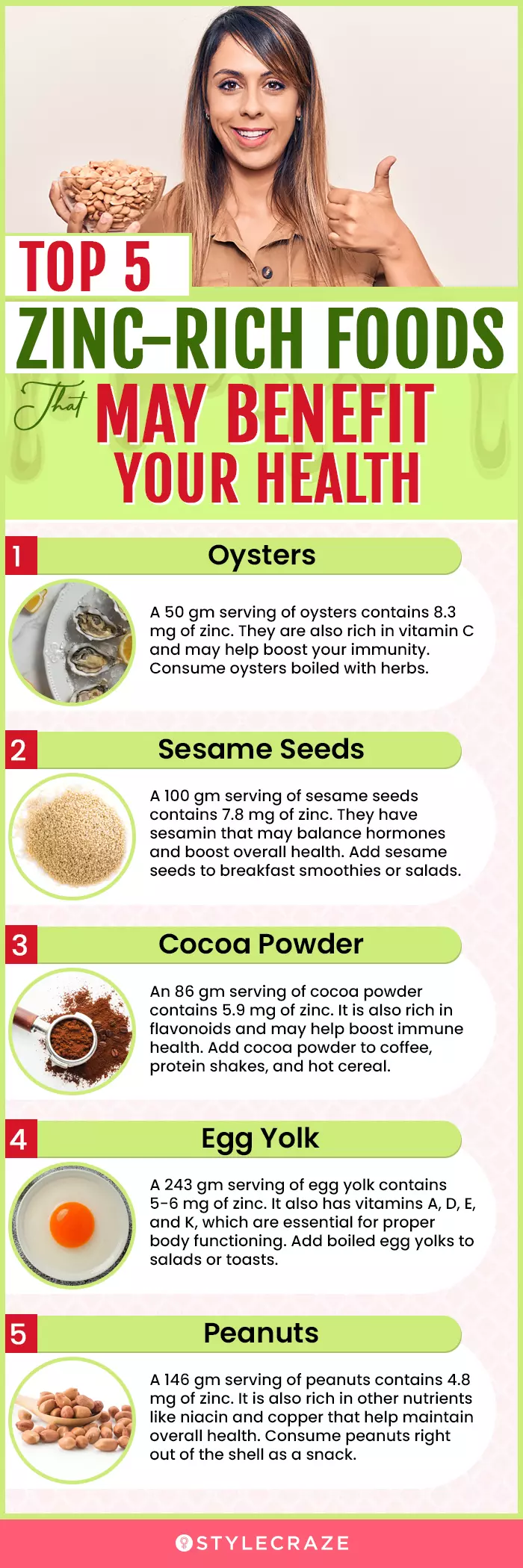
Illustration: StyleCraze Design Team
Although it is a trace mineral, zinc regulates numerous functions in your body, starting from producing enzymes to fighting free radicals and producing collagen. It is present in human cells throughout the body and forms an essential component in immune function. So, consuming zinc-rich foods, especially oysters, sesame seeds, oats, lima and kidney beans, egg yolk, flax seeds, and almonds, is highly advised to reduce the risk of zinc deficiency. Weakened immunity, hair loss, infertility, poor sleep quality, among others, are some of the symptoms of this deficiency. Consult your doctor immediately if you experience any of these symptoms.
Frequently Asked Questions
Is banana rich in zinc?
Yes. According to the USDA, one banana (115 g) contains 0.184 mg of zinc (15).
How much zinc is in milk?
One cup of low-fat milk contains 1.0 mg of zinc (16).
Does lemon have zinc?
Yes. According to the U.S. Department of Agriculture, one raw lemon contains 0.035 mg of zinc (17).
Does onion contain zinc?
Yes. As per USDA, one large onion (150 g) contains 0.255 mg of zinc (18).
Key Takeaways
- Deficiency of zinc can result in poor skin health, hair loss, infertility, poor immunity, and more.
- Foods rich in zinc include delicious food like oysters, egg yolk, oats, beef, chicken, lima beans, pumpkin seeds, etc.
- The daily dosage of zinc for adults should be 9 to12 mg daily.
- Zinc is a crucial mineral that is vital to several functions of the body. The body requires zinc for growth and development.
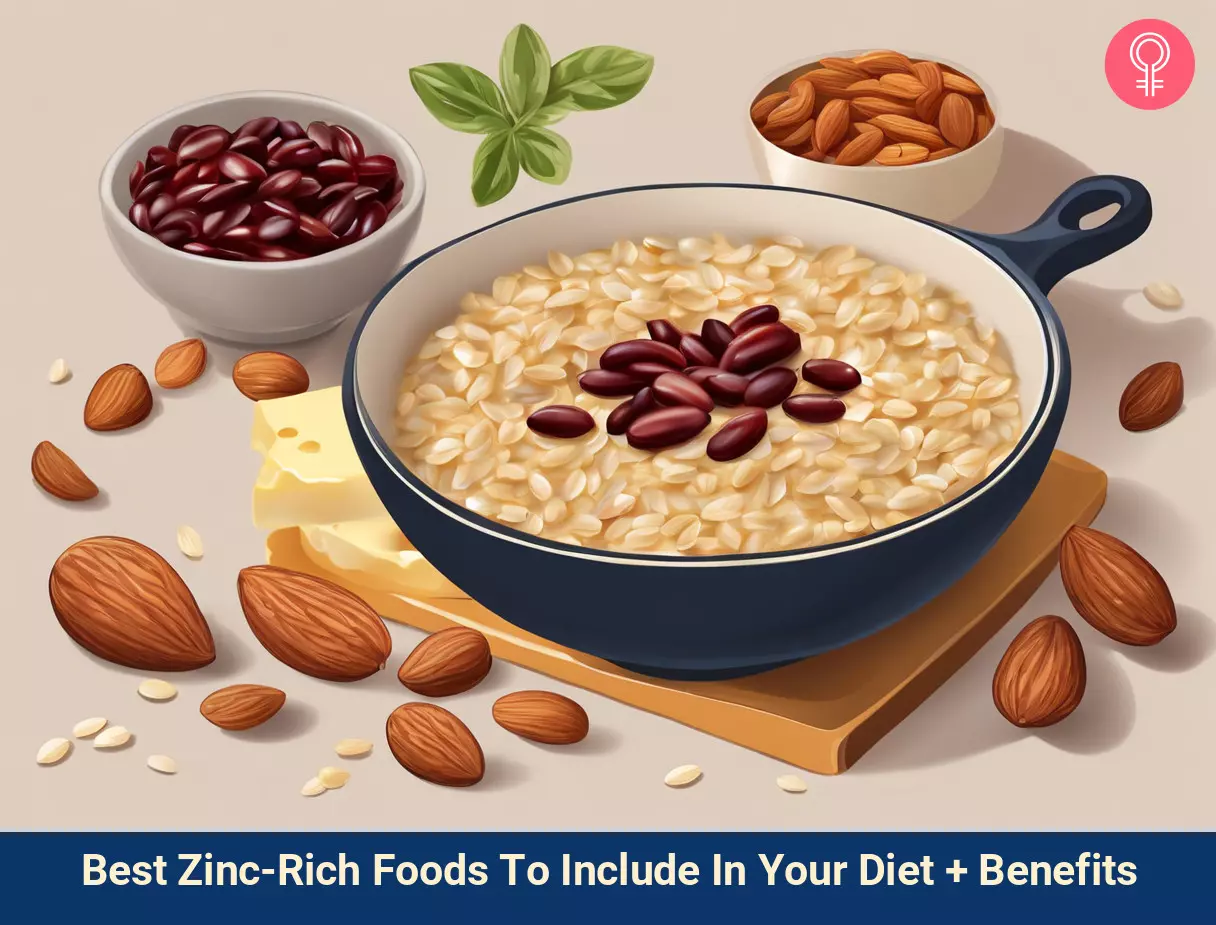
Image: Stable Diffusion/StyleCraze Design Team
Explore the top 10 delicious and nutritious foods that are rich in zinc, a vital mineral for immune function, wound healing, and maintaining optimal health. Check out this video now!
Personal Experience: Source
StyleCraze's articles are interwoven with authentic personal narratives that provide depth and resonance to our content. Below are the sources of the personal accounts referenced in this article.
i. Health benefits of zinc and recipes to include in your diethttps://sameatshernutrients.com/2017/07/27/health-benefits-of-zinc-and-recipes-to-include-it-in-your-diet/
References
Articles on StyleCraze are backed by verified information from peer-reviewed and academic research papers, reputed organizations, research institutions, and medical associations to ensure accuracy and relevance. Read our editorial policy to learn more.
- “Mollusks, oyster, Pacific, raw”. United States Department of Agriculture.
- “Value addition in sesame”. National Bureau of Plant Genetic Resources, India.
- “Flaxseed—a potential functional food source”. Journal of food science and technology
- “Improvement in HDL cholesterol…”. University of the West Indies, Jamaica.
- “The metabolic effects of oats intake…”. Sichuan University, China. 2015 December.
- “The Effect of Lutein on Eye and Extra-Eye Health” Nutrients, US National Library of Medicine, National Institutes of Health.
- “High Dry Bean Intake and Reduced Risk of Advanced Colorectal Adenoma Recurrence among Participants in the Polyp Prevention Trial” Journal of Nutrition, US National Library of Medicine, National Institutes of Health.
- “Nutritional and health benefits of dried beans”. The American Journal of Clinical Nutrition.
- “Effect of beta-alanine supplementation on muscle…”. Nottingham Trent University, United Kingdom. 2010 July.
- “Vitamin E and cognitive decline in older persons”. Rush Institute for Healthy Aging, USA. 2002 July.
- “Antioxidant health effects of aged garlic extract”. Tufts University School of Medicine, USA. 2001 March.
- “Riboflavin and health”. The University of Sheffield, United Kingdom. 2003 June.
- “Grass-fed beef: What are the heart-health benefits”. Mayoclinic.
- The Odyssey of Bioactive Compounds…” Antioxidants
- “Bananas, ripe and slightly ripe, raw”.United States Department of Agriculture.
- “Zinc”. National Institutes of Health.
- “Lemons, raw, without peel”. United States Department of Agriculture.
- “Onions, raw”. United States Department of Agriculture.
Read full bio of Allison Schaaf
Read full bio of Arshiya Syeda
Read full bio of Aparna Mallampalli





